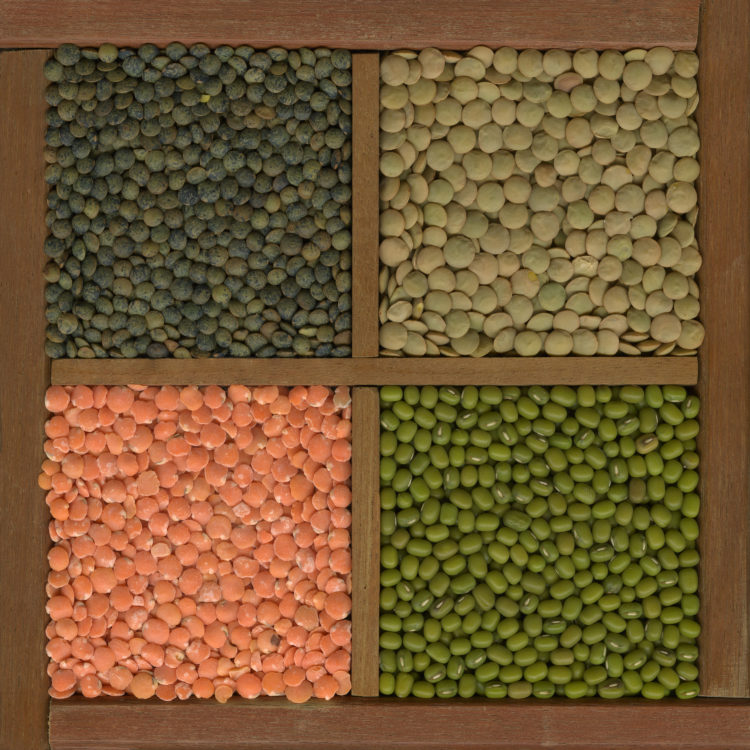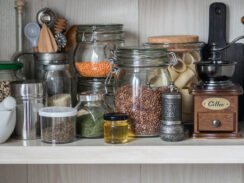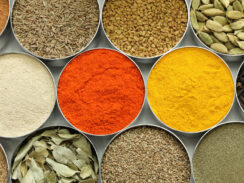A Complete Guide to Lentils
An easy and complete guide to lentils, protein powerhouses for vegans! Lentils are easy to cook and have a hearty and earthy flavor plus a long shelf life.
Lentils are the smallest members of the nutritious legume family and are also known as pulses. They’re high in protein and fiber and packed with iron, B-vitamins, folate, potassium, and more. In a vegan diet, lentils are a healthy choice when you’re looking to boost your daily protein intake (1 cup of cooked lentils provides 18 grams of protein!). According to WebMD, when lentils become combined with a whole grain such as brown rice or quinoa they provide the same quality of protein as meat. Incorporating lentils in your meals can be made easy with a little help from this complete guide to cooking lentils, so let’s get started…
Lentil VARIETIES & DISHES
Lentils come in a wide range of colors, each slightly different in texture and flavor:
- Beluga (resembles little beads of caviar)
- Brown
- Green (aka French Lentils)
- Red
- Yellow
Brown lentils are the most common type of lentils that you’ll find in your grocery store. They have a mild earthy flavor and are perfect for hearty soups, like my Cumin Lentil Soup, and can also be used to emulate a “meaty” texture when pulsed and thrown into a classic Bolognese sauce. Green lentils and beluga lentils hold their shape during the cooking process and are wonderful in salads or simply on their own, warmed or at room temperature. They have a slightly peppery taste. Yellow and red lentils cook faster and break down quickly, which makes them an ideal base for Indian dals and stews; and red lentils actually turn yellow once cooked! These smaller lentils are the sweetest and nuttiest in comparison to the other varieties. I usually make a large batch of lentils and serve them in meals throughout the week. I’ll often just throw them together with some roasted veggies and greens and call it dinner! My Herb Lentil Salad recipe can serve as a guide for preparing lentils.
LENTILS ARE USED WORLDWIDE
Pulses are a staple in diets globally. In India, they make an appearance in almost every complete meal by way of dals and curries. The Middle East invented mujaddara, which is a dish that combines lentils, rice, and caramelized onions. The French love to eat a simple lentil salad with vinaigrette. In Africa, Ethiopians eat a spicy lentil stew with the popular berbere spice and injera (flatbread) on the side. In America, gluten-free manufacturers use lentils to make pasta from red and green lentils that have the texture of their glutinous counterparts.
HOW TO COOK LENTILS
Before I start cooking lentils, I like to sort them by laying them out on a towel to make sure there’s no debris, stones, or shriveled up pieces. Unlike beans, you can skip soaking them overnight because they’re smaller, contain a smaller amount of lectin, and are therefore easier to digest. Simply place them in a colander and rinse them of any dust that may have collected in processing.
ON THE STOVE TOP
Combine your rinsed lentils with water covering an inch above in a saucepan and turn the heat to medium-high to let the water come to a simmer. At this point, you may want to add aromatics and spices or broth to flavor your lentils. Reduce the heat to medium-low and let the lentils cook gently. Be sure not to cook them at a fast simmer as they’ll quickly break down and turn into mush. The cooking time will vary depending on which lentil you’ve chosen — red, yellow, and beluga lentils require about 15-20 minutes, while brown and green lentils may take anywhere from 30 to 45 minutes before they’re tender.
IN THE INSTANT POT
If you have an Instant Pot, you can have ready-to-eat lentils in 10 minutes in what is virtually a hands-off cooking process. For every cup of lentils, use about 1 ½ cups of water (add a little more if you’re using larger lentil varieties). Feel free to add seasoning or broth at this time as well. Using this method, green and brown lentils are ready in 5-6 minutes, whereas yellow and beluga lentils take about 10 minutes and red lentils (the smallest of the bunch) can be ready in 4-5 minutes. At the end of the cooking time, let your lentils sit while the Instant Pot slowly releases pressure on its own (this should take about 10 minutes).
Dried legumes always expand in size when going from dried to cooked, so 1 cup of dried lentils will make about 2 ½ cups of cooked lentils whole-shaped or 2 cups if they’re split-shaped. If you’re going to make lentils you might as well make a large batch because they freeze beautifully in an airtight container for six months. If you’re looking to use them that week, they can sit in the fridge for up to 5 days!
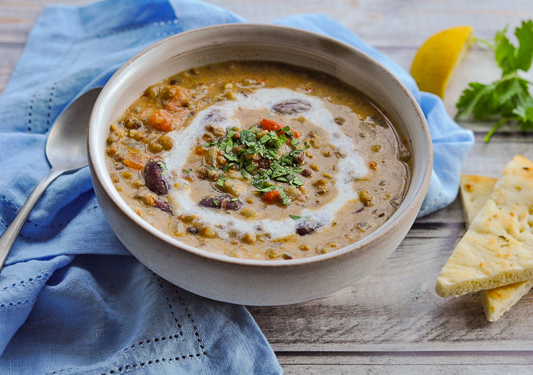
ADDING FLAVOR to Lentils
You’ll want to use the cooking steps above and add some aromatics or spices to your lentils, otherwise they’ll have a very neutral taste. The beauty of these legumes is that they are a vessel for any flavor you may want to impart. A few tips for this part of the process:
- Use vegetable broth instead of water to instantly give your lentils a makeover.
- Make a bouquet garni by combining a bay leaf with a handful of parsley and thyme and bundling them in a tied cheesecloth bouquet, then letting them simmer in the pot with the lentils. Be sure to take the bundle out and discard it after cooking.
- Add 2-3 cloves of garlic and half an onion or shallot to help flavor the cooking water.
- Use a combination of Indian spices to create depth of flavor — cumin, coriander, and turmeric in equal measure work best for lentils.
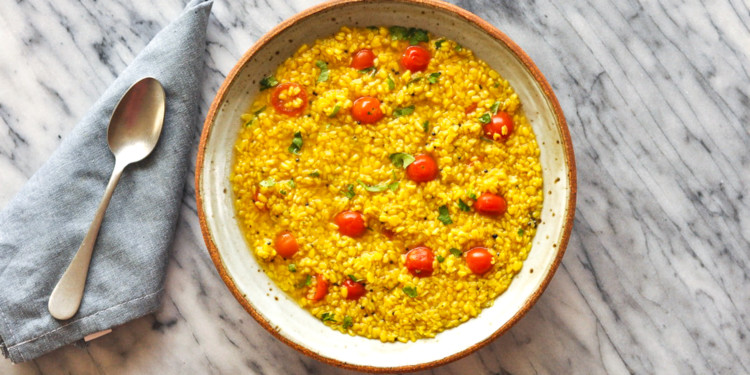
BUYING & STORING lentils
Canned lentils are convenient and can save you a lot of time. Just rinse the lentils of their canned liquid and they’re ready to be used! However, for taste, I recommend buying dried lentils in bulk — you’ll save money and you’ll most likely be getting fresher lentils because they turn over faster than bagged varieties in grocery stores. Dried lentils come in two different sizes – split and whole. The latter takes longer to cook and is less likely to break down while cooking.
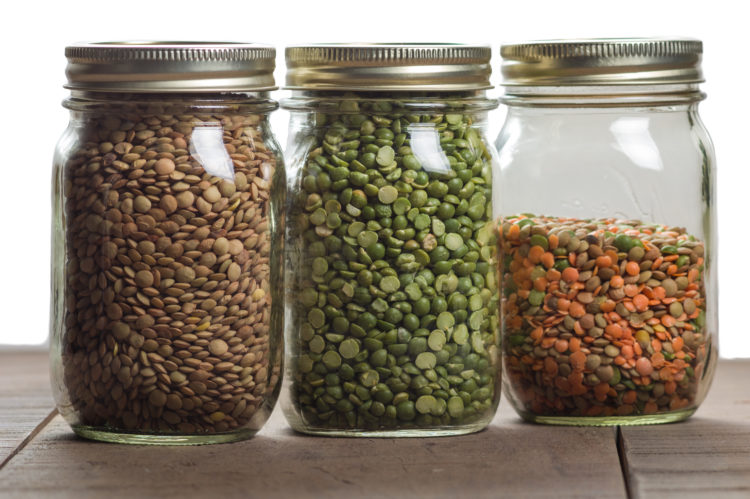
For long-term storage, I recommend buying a dozen jars with tight-fitting lids, filling them with your favorite legumes, and storing them in a cool and dark place. Both canned and dried lentils will last for 2-3 years, so you can never purchase too much!
